Dates visited: July 19-29, 2021
The Land of Fire and Ice, they call it, which could only be more fitting if they mentioned the rest of the elements too. The land where Fire becomes Earth, on which Water dances in all its forms: ice, snow, rain, sideways rain, cloud. The Wind dances too, although it’s an interpretive sort that borders on a martial art. Four titans each trying to outdo each other in leaving their marks upon this blank canvas of a new island. It’s impossible to say which is winning.
The Icelandic landscape has this unshakeable quality of being Elsewhere. The countryside is a patchwork quilt of braided rivers and frigid peaks and ancient lava floes, which are being slowly smashed to pieces by the forces of nature and colonized by delicate carpets of 200-year-old mosses. Hot geothermal steam pours out of cracks in the earth and sometimes entire mountain valleys, where hiker-pilgrims can soak in magma-heated waters. Even the doors here have an otherworldly quirk: you have to yank the handles up before you can engage the lock (a trick you will definitely forget about until you’re out in 40-mile-an-hour wind trying to open your hotel room). And the way the slanting subarctic light scatters across this Elsewhere plane…where do I even begin?
Night is a relative concept in subarctic July. I would walk outside under a clear sky at midnight and it would hold the same promising grey-blue glow as high noon on a cloudy day. The endless light smashed our internal clocks to bits and teased us: stay awake, never sleep, put on your boots and come with me because I have so much to show you. Every day we’d fill up our energy tanks with more cups of coffee than hours of sleep. “I can sleep when I’m dead!” repeated Aunt Judy every day, until it became the trip’s unofficial tagline. Anything to eke out a few more moments of boots-on-the-ground-wind-in-our-faces experience.
I have done my best with words and photographs to distill the spirit of Iceland into a digestible page, but as with any distillation it falls short of the real thing. Below are four of my most-beloved experiences from Iceland, but my actual recommendation is this: Go. Just go. Iceland and the elements will take you from there.




Fagradalsfjall volcano eruption
Boiling lava, as it turns out, sounds like a distant ocean, and I have always been drawn to the sea. The fact that this ocean was made of molten rock so hot that it would have vaporized me before I’d even gotten close enough to touch it didn’t stop me from trying. I wanted to see the Earth being born. I wanted in-my-face evidence that this space-rock we inhabit is a living thing, too, except that its blood is made of red-hot rock and its breath of poisonous sulfur.
A web of old trails criss-crossed the golden landscape, but most of them ended abruptly at the lava field, having long ago been devoured by a capricious lava river. The lone surviving trail led me to the foot of this cooling lava field before I could even see the active crater, but I was still so shocked by its existence and my presence next to it that my jaw hung open like a cartoon character. The jagged field of black glass simmered with residual heat and belched beige steam. Shapes I would never have associated with lava rippled outward from my toes: knotted ropes and folded sheets, schooner’s sails and horse’s manes, all frozen in warm black glass inexplicably laced with iridescent sapphire. I touched one of Earth’s newest rocks and it gripped at my skin like a cat’s tongue.
The path doglegged away from the lava field and led up a steep spine of loose rock. I flew up it, scrambling on my hands and knees sometimes just to move faster. The volcano was having a lazy Monday and only occasionally spat fire above its rim. Nevertheless I was mesmerized. I was content to wedge my body behind a boulder and suffer the gale-force winds hurling poisonous gasses directly into my face, which in my (burning) eyes was fair payment for the chance to see fresh lava at all. I stared until the fitful volcano was completely wreathed in evening fog and only then did I reluctantly depart, already impatient for tomorrow’s second chance to visit with my inbound aunt.
I barely slept and when I did I dreamt of fire. I awoke with my eyes still burning and my hair still reeking of sulfur, despite a long hot shower with repeated shampooings. To my endless delight the volcano had awoken restless, too, and it continuously threw so much lava out of its bowl that a glowing river curled from its mouth all the way down into the next valley. Come closer, closer, closer!, called the void of Fagradalsfjall, and my aunt and I were both powerless to ignore it. We walked for miles along the shore of the endless frozen black sea, a pair of Michigander hobbits headed for Mordor, our journey set to an ominous soundtrack of lava-ocean susurrations drifting down from high above.
I am alive, I thought I could hear the Earth shouting to me from its restless mouth, and therefore so are you.


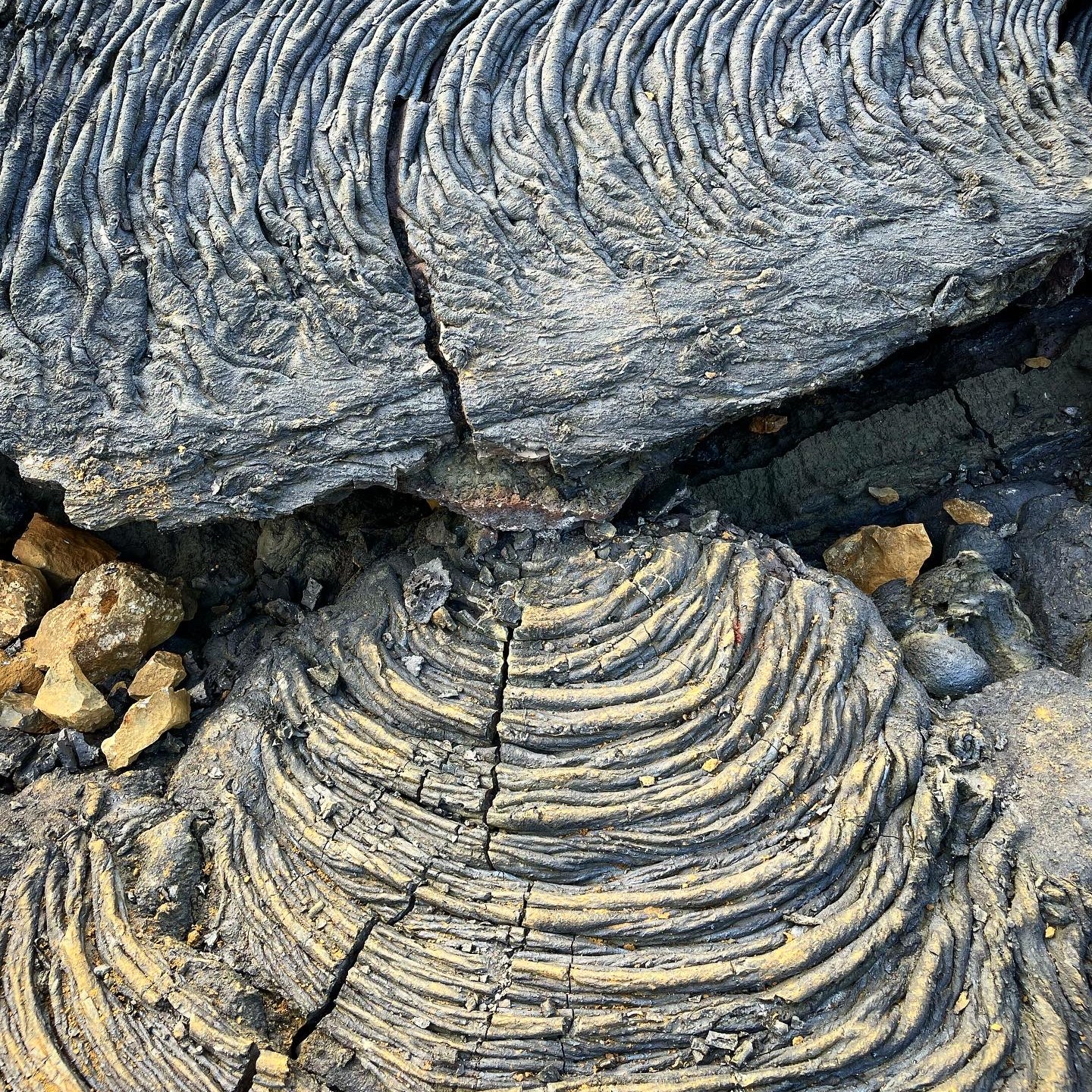
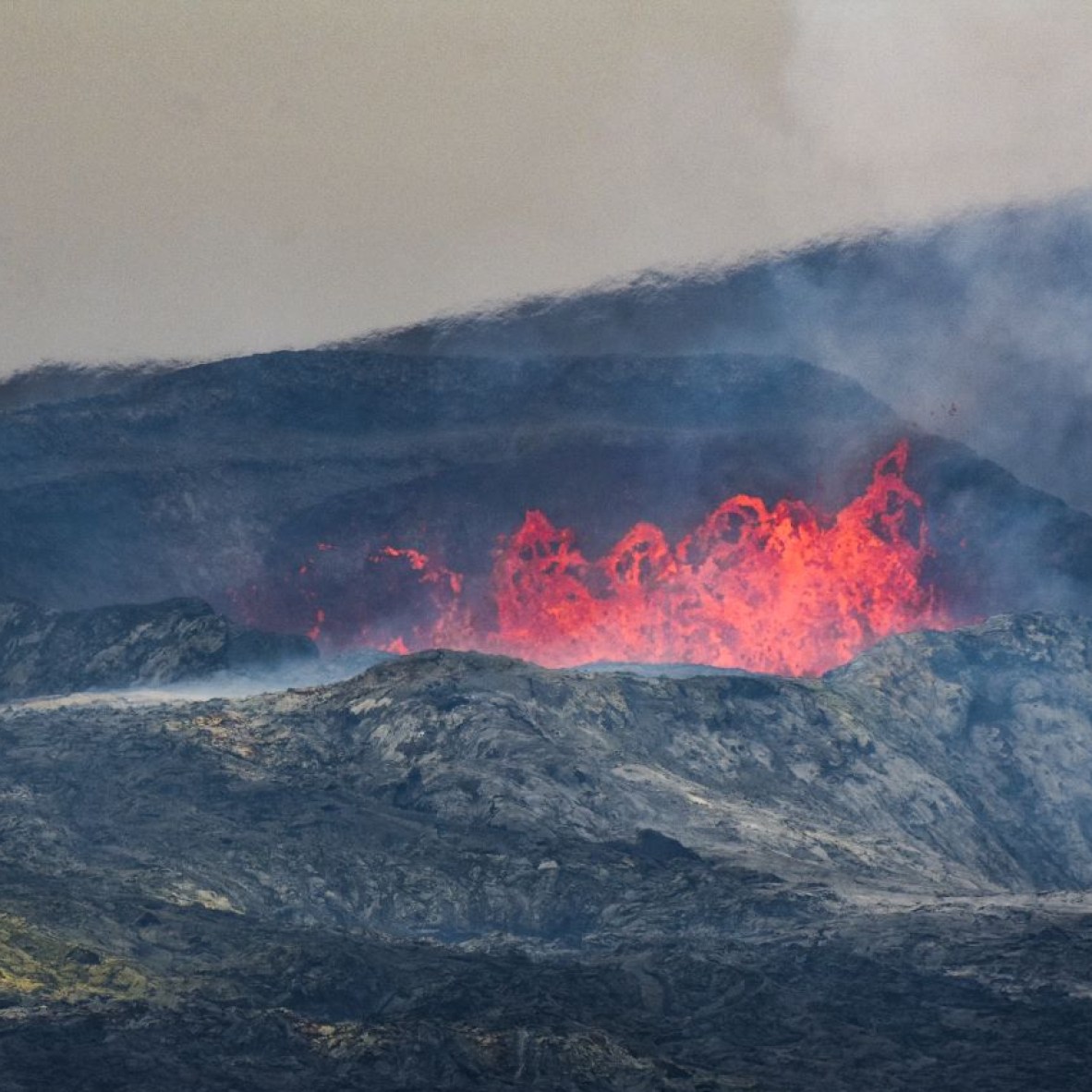


Fimmvorduhals waterfall trail
Skógafoss waterfall roars, but its power is equalized by the thirsty lava soil waiting beneath. Icelandic waterfalls are champions of the shallow dive, launching themselves from precipitous cliffs and landing in veritable puddles without injury. I approached this shallow lagoon gingerly, almost wondering if the ground might devour me too, but how many chances do you get to walk straight up to the base of a 60-meter waterfall? The wind was at my back, ushering me forward, pressing the mist towards the rock and then up and behind my head where it exploded into a double-rainbow-halo around my shadow. I was delighted and nabbed a few photographs before the exact science of the rainbow’s formation had time to hit me…but not before the raindrops did. I backpedaled but it was way too late. I emerged utterly dripping and grinning from ear to ear.
An unlikely stairway led away from the shallow lagoon and up through the mist. It was a monstrous steel contraption that was utterly dwarfed by the landscape. We wandered into the sky without even asking where the stairway would lead us; Iceland’s invariable answer to this rhetorical question was “somewhere awesome,” so we quickly began jumping into experiences blind. This time, “somewhere awesome” was the crux of cliff and waterfall and sky, where somehow all the world’s parts added up to more than a whole. Iceland spills south from here, the result of a recent glacial outburst flood called a jökulhlaup that shoved the entire coastline a few miles out into the fitful sea. The black earth is as absolutely flat as a charred pancake, except when it absolutely isn’t: incongruous mountains and mesas burst from the plateau, former islands that once lived in the sea. The river’s water rushed past us and down the face of the cliff, as is tradition, but also out and up via an explosion of friction that suggested gravity is just a theory. The high-latitude summer’s light caught these weightless drops, tossed them back and forth across the sky, and only put them aside when the next batch came along. The wind took them from there, sprinkling the droplets across my brow and nose.
An unlikely path led away from this 150% panorama and up along the river valley. We jumped in blind and followed a frozen wave of the Earth. The elements have been particularly hard at work and play here: slices of the cocoa-colored rock have been gorged away by the hands of the wind and the water. A pair of glacier-cloaked and very active volcanos simmered a few dozen miles away, just beyond a grassy plain littered with trios of grazing sheep. An ever-present threat juxtaposed against the pastoral. Beauty with a dash of danger. The smaller volcano Eyjafjallajökull infamously erupted ten years ago and shut down the entire continent’s aviation industry for a week. But its larger sibling, Katla, is the real concern: it’s long overdue for one of its famously catastrophic eruptions.
We shrugged and walked up the path towards the ornery volcanoes anyways, because “what were the chances they’d pick today to erupt?” Like intentionally heading towards a raging lava river or approaching a thundering waterfall’s base, we’d apparently just decided to just raise the bar for risk-taking. No guts, no glory! And glory we found in spades. Spectacular rapids and waterfalls regularly appeared along the river’s path with almost comedic timing. The moment we passed one spectacular waterfall, the gorge would pirouette and the next waterfall would appear. The trail kept climbing and the light kept coming, so we just kept going: five waterfalls in under a mile. Convincing ourselves to turn back to the car under such perfect conditions always became a game of chicken, and was always eventually decided by the knowledge that much more waited for us along the journey of the Ring Road. But if I’d had the time, this is one of those places I could have sat forever, watching time pass through the sheep and the water and the volcanoes as the sun played with the mist.



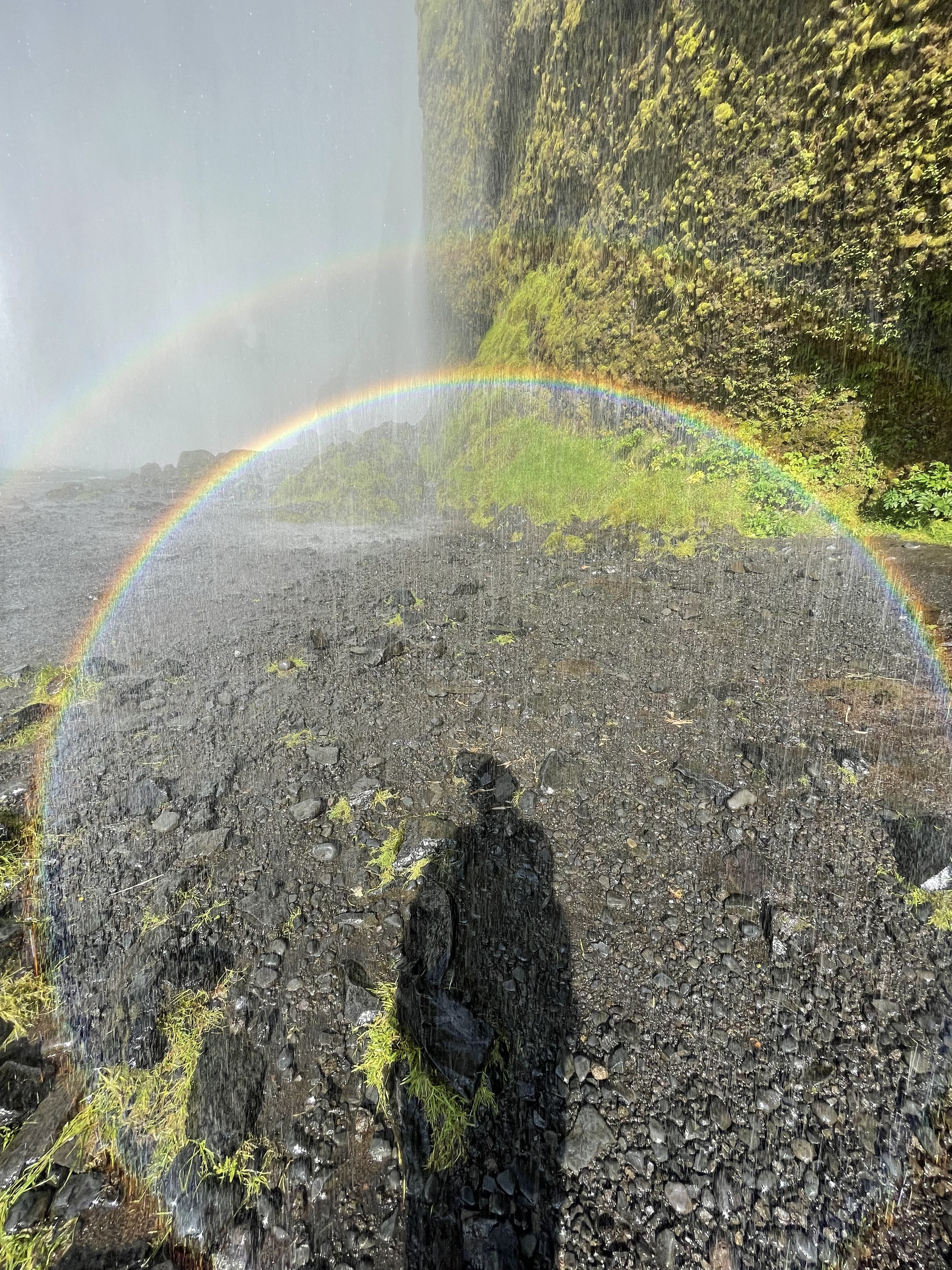


Jokulsarlon and Diamond Beach
Where on Earth can you see a kayaking crocodile, an aquamarine dragon, and a hitherto-unknown mythological creature composed of a duck’s body topped with the head of a ram? A frigid meltwater lake fed by a thousand-year-old glacier, of course. In this protected lagoon, icebergs have plenty of time to roll over and expose their turquoise bellies, to slowly melt into fantastic shapes that have only slightly more longevity than their equally fantastic cloud-vapor-cousins hanging in the sky. At the base of the lake, a single outlet of meltwater leads from the lagoon through the volcanic sand and out into the open ocean, half a kilometer away. It is here the magic ice beasts all eventually congregate: so many broken pieces of glacier coming back together again to create an immense but temporary dam.
A delicious tension crackled in the air as we watched the dam. We could feel the urgency of the frigid water as it pressed against the wall of ice, a million liquid fingers searching for secret passageways through. I bounced on the balls of my feet, and only partly because I was standing in a wintry vortex at the edge of a glacial lagoon. Like waiting for the volcano to erupt, I was desperate to witness the exact moment this dam cracked and burst.
I felt it more than I heard it: a groan of defeat so deep it vibrated through the earth instead of the air. Nothing moved, however, and I almost thought I’d imagined it until my toes rumbled again. There! Just upstream, a sheet of ice larger than my apartment building has shifted a foot to the left. A slumbering giant suddenly come to life, it slowly pivoted and then ripped free from the rocky lake bed. It edged towards the dam, gathering minimal speed but buckets of inertia, until it became a battering ram on target for utter annihilation. I could barely breathe. The collision happened in such slow motion that the seabirds lining the lip of the iceberg didn’t even budge, and yet the damage was catastrophic.
The entire dam rippled. The upper section absorbed the hit like a rugby scrum, but the inertia traveled down through them until finally a few smaller bergs at the bottom snapped free with a delicious billiards-like crack. They careened downstream, past the downy ducklings and sleek seals playing in the barely-liquid water, then under a bridge that frankly didn’t seem tall enough to allow their passage. Finally they shot out into the frigid North Sea, where they were captured by long grey rollers and tossed back towards the shore of Diamond Beach. Iceland was not quite done with them yet.
Shards of white and turquoise tinkled against one another in the shallow surf like a field of broken glass. They rested upon the sand as an ever-shifting exhibition hosted by resident artist Mother Nature herself, showing off that week’s finest pieces. Admire them quickly, for they won’t last. Sweetwater tears borne of ancient ice wept down their faces, pattering into the inky sand before rejoining with the saltier seas. Finally returned to a home they’d last visited a thousand years ago.
I licked an iceberg, just for funsies. It tasted just like 1021 AD.

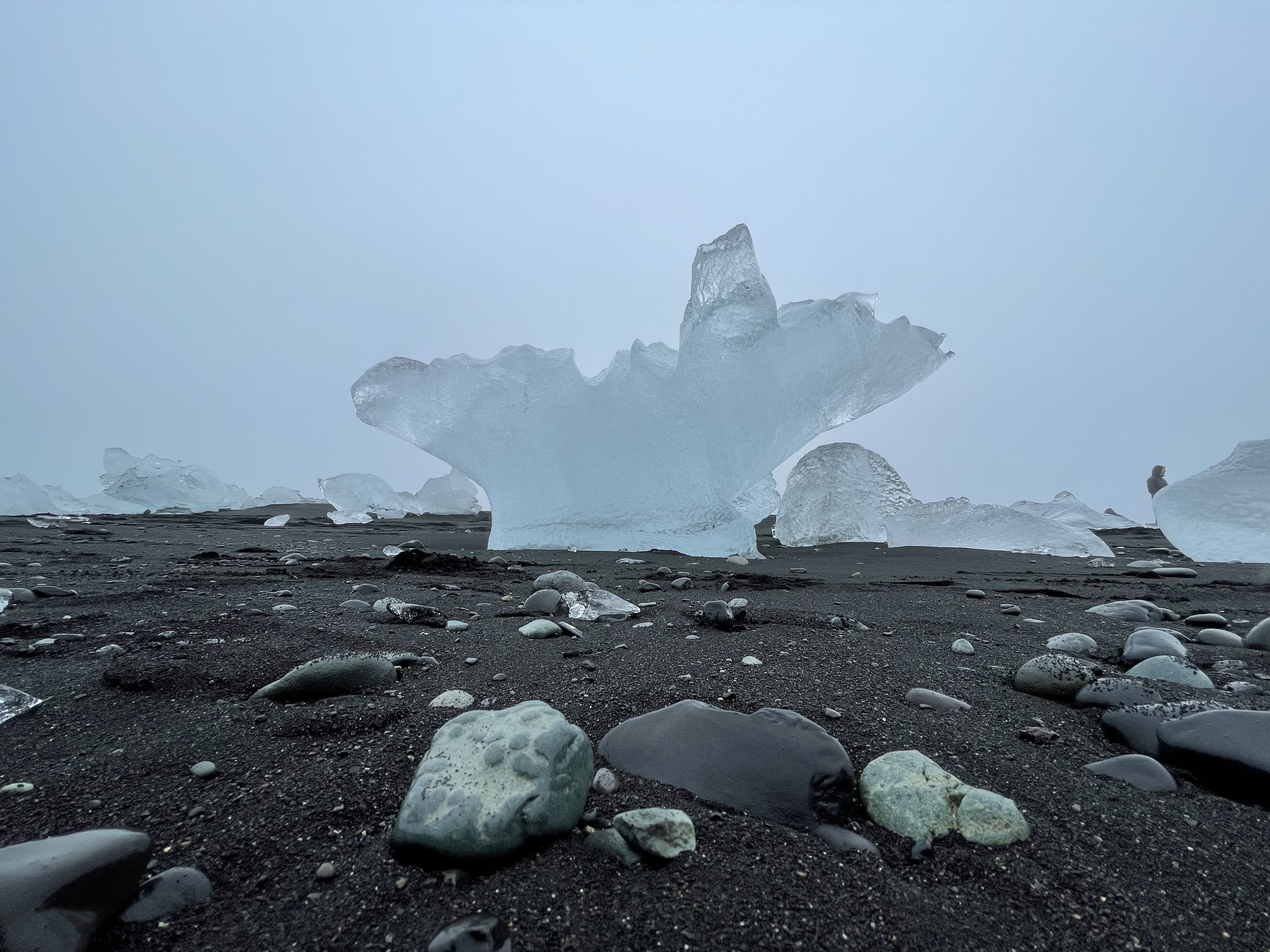




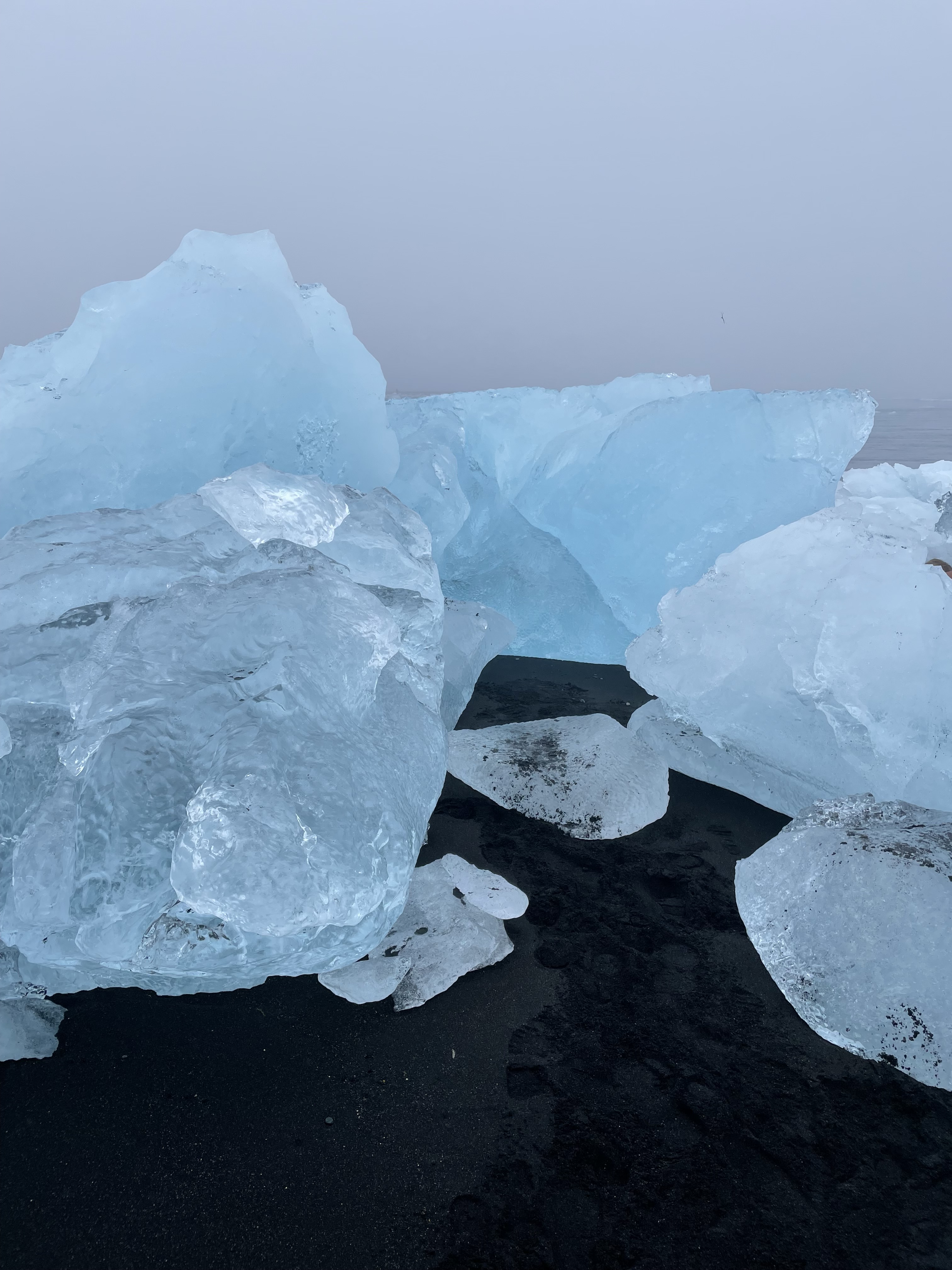


Puffins at Dyrholaey
Look, I’m a professional biologist currently doing a PhD in evolutionary genetics, and I’m here to tell you: I’m just as baffled as you are that certain lifeforms continue to exist despite everything Mother Nature throws at them. Survival of the “fittest” can mean a lot of different things. Take puffins, for example. A diminutive seabird that spends six months of the year floating and flying over the sea, not setting webbed foot on land until it’s time to create the next generation of unlikely birds. These birds hunt for fish by diving face-first into barely-liquid water and shoving multiple fish into their bills at once with the help of a spined tongue. Puffins are so good at this game of face-Tetris that a bird was once seen with 62 fish crammed in its bill – !
Now, take these impressive feats of fitness and stick them in a ten-inch bird that’s black and white and cute all over. The orange accents on their bills and feet flash in the sunlight as they beeline back and forth between their burrows and the sea on fishing missions. They are masters of the air and sea, all snappy wingbeats and determined bearings. They always fly in hot towards land. Much-larger seabirds have learned it’s much easier fill their own bellies by waiting on land and stealing food from inbound puffins rather than going fishing themselves, so the puffins have adapted by landing as close to their tiny protected burrows as possible and beelining inside to eat in peace.
This is where that whole “fitness” thing gets dicey.
The puffins’ method of landing involves splaying out their stubby wings and orange feet right before the moment of impact. They transform from aerodynamic bullets into graceless flying squirrels. They literally belly-flop into the muddy cliffs. Usually they’re lucky enough to land in the general vicinity of their burrows and just hop the rest of the way home, like tiny drunken fishermen in a potato-sack race. Their bills are jammed full of fish, a mass of flashing silver heads and tails that hang from the puffins’ faces like silver beards full of eyes. The birds are always on the lookout for gulls waiting in ambush, so their heads swivel back and forth as they hop, jiggling those absurd silver-beards-full-of-eyes to and fro. I couldn’t stop giggling. They’re just as clumsy when they take off back towards sea. They just kind of tip forward and belly-flop into the air, splaying their wings and feet as they fall just like a panicked child jumping from a diving board before he’s learned how to dive. There were so many out-of-control puffins all simultaneously trying to land and take off that they occasionally crashed into each other midair. Their wings beat furiously as they dropped and then finally, in the blink of an eye, they became dignified bullets again and raced for the sea.
We were so charmed by these graceful-clumsy birds that we made three dedicated stops to see them near the town of Vik, at Dyrholaey and Reynisfjara black sand beach. The landscape warrants a stop even if the birds aren’t around: it’s a hexagonal basalt-column wonderland filled with cliffs and caves and sea stacks and a black sand beach that stretches for miles. When the birds are in town, though, the landscape almost doesn’t even register, because your attention will be so thoroughly captured by these belly-flopping masters of subarctic fitness.


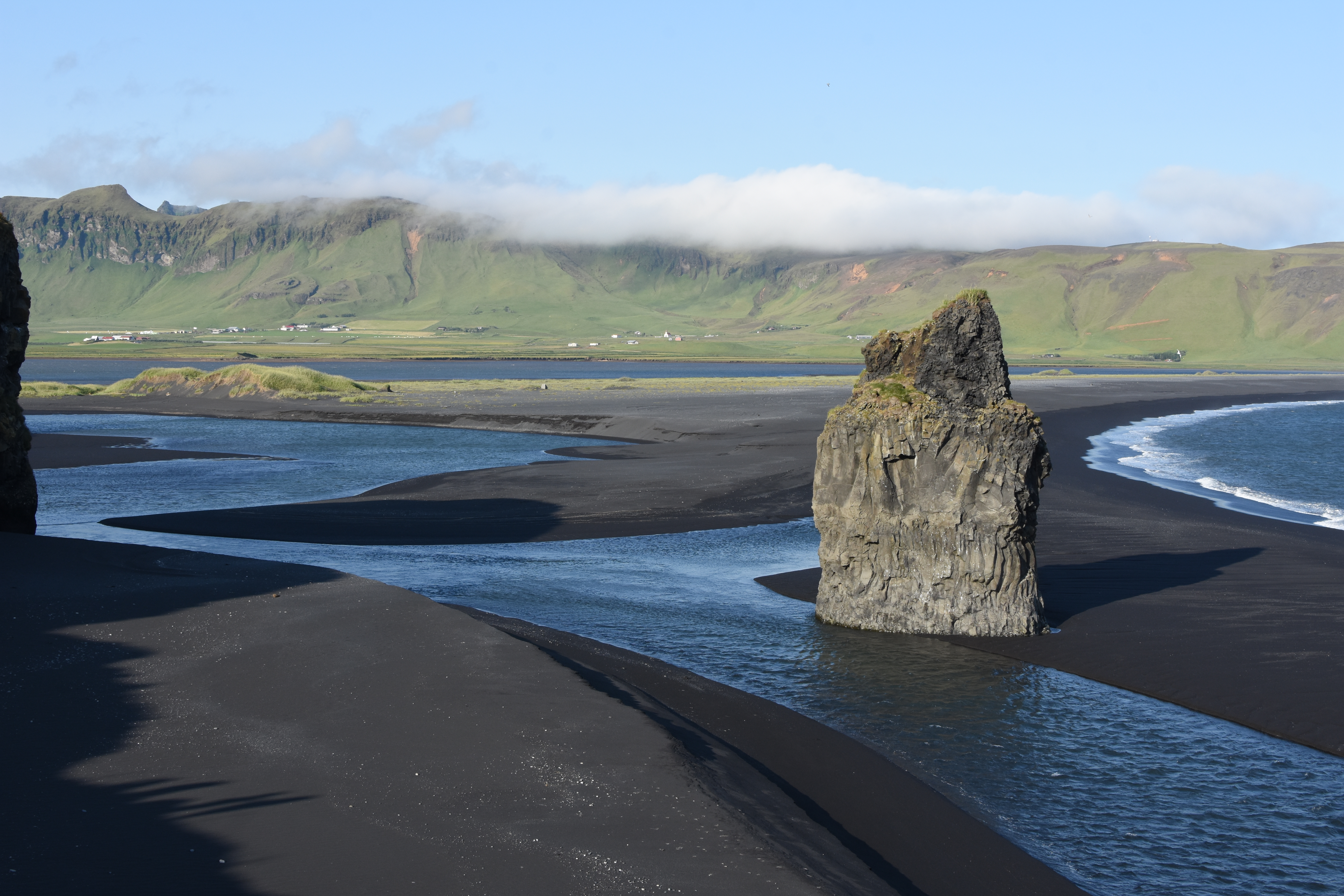

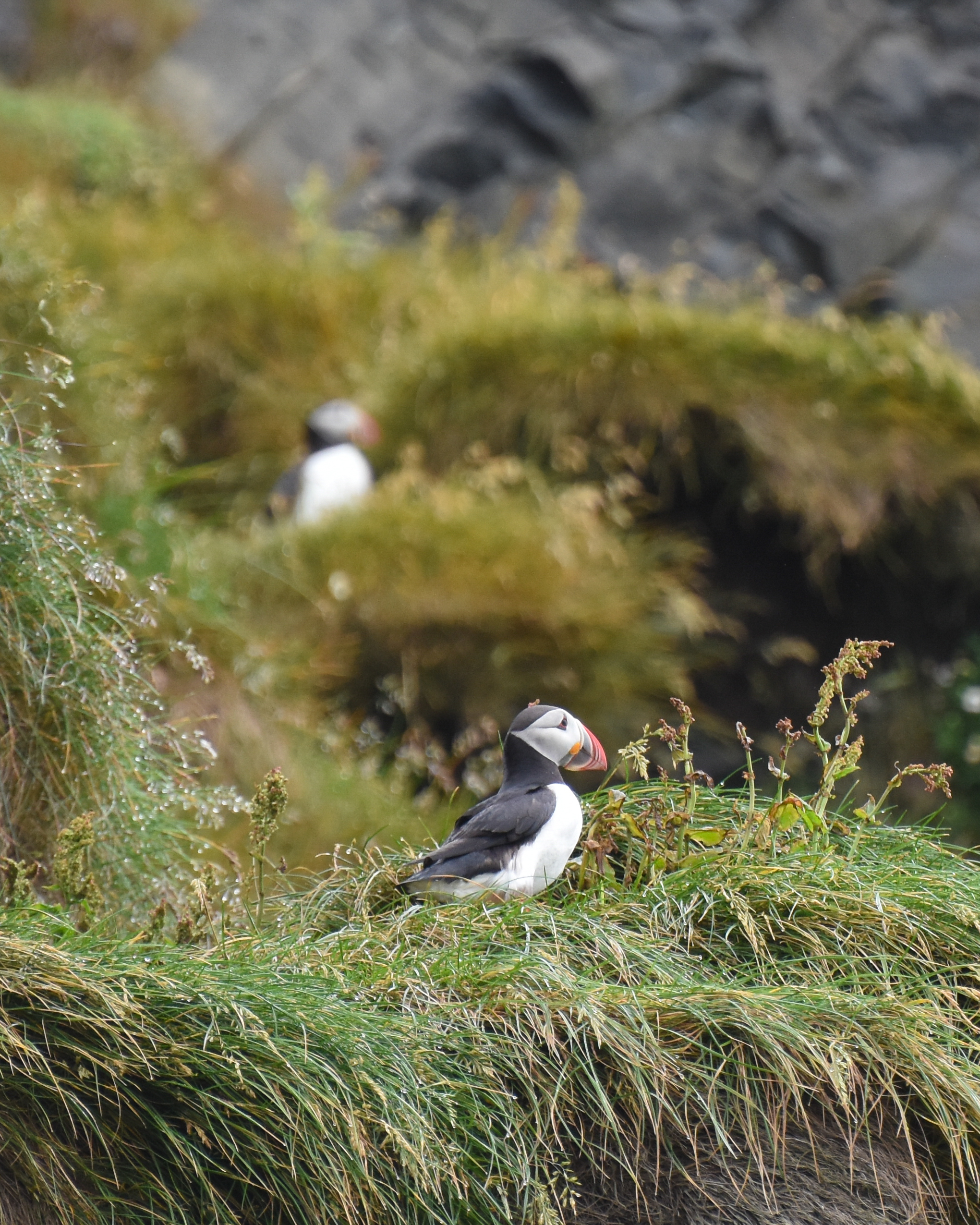

More on Iceland coming soon!
Leave a comment